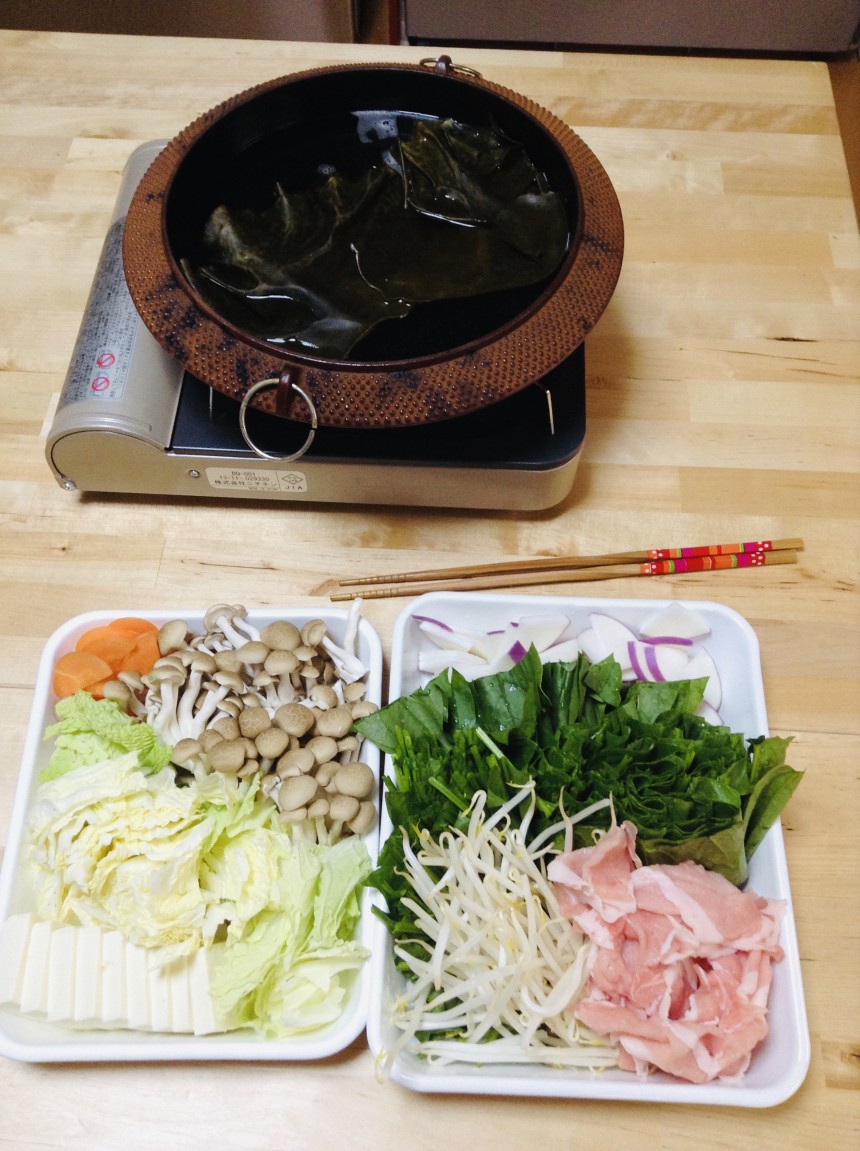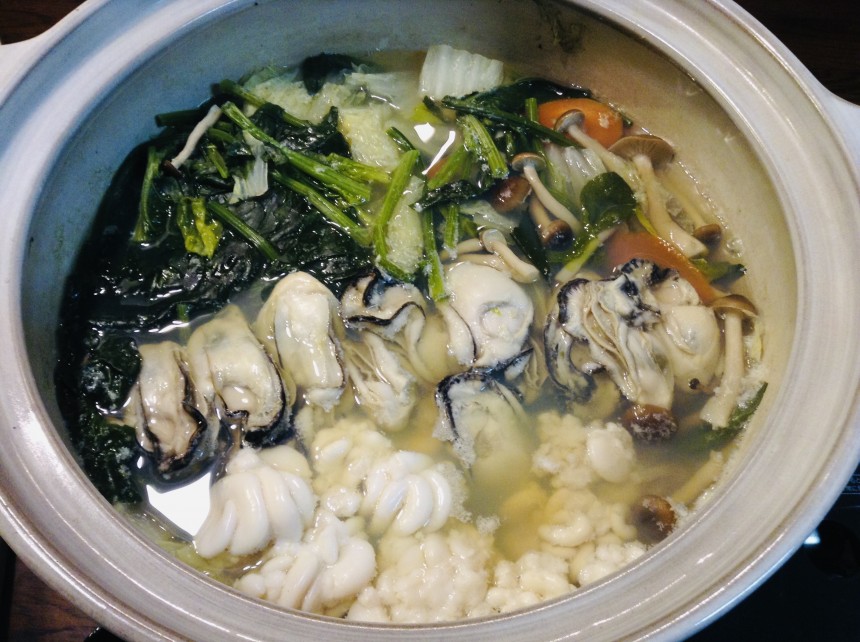
There is something very comforting about sitting around a bubbling hot pot with friends and family. Often rich with a variety of vegetables, hot pots are also very nourishing. A nabe (Japanese hot pot) is an easy meal to put on the table with a simple clean-up, as it is a one-pot meal. Some famous styles include sukiyaki, shabu-shabu, or chankonabe (known as the sumo wrestler’s meal). These dishes can be found in restaurants, but cooking nabe at home is really a breeze and recently there has even been a trend of hitori nabe (hot pot for solo diners) — so don’t let that hold you back from getting started. Keeping in mind that there are a few guidelines but no set rules for cooking nabe, here are some basics to get you started.

The most essential equipment are the konro (tabletop butane gas stove) and hot pot. The size of the pot should be determined by the number of people you are cooking for. There are many styles of hot pots but to get started, a donabe (clay pot) is the most versatile. Do note that it needs to be seasoned with rice before using for the first time.
When you’re thinking of what to put in it, for proteins, consider: chicken, sliced pork belly, beef, fish (like cod or salmon) or shellfish; ground chicken or pork can be formed into meatballs; even frozen gyoza could be your protein.
For vegetables, use a wide variety including daikon, hakusai (Napa cabbage), carrots, shungiku (edible chrysanthemum), komatsuna (Japanese mustard spinach), mushrooms, leeks or cabbage; and use mushrooms such as enoki, shiitake, and shimeji. Shirataki (chewy konnyaku noodles) add a nice texture, but check the package as some need to be boiled in water to get rid of the “off” aroma before being added into the nabe.
Dipping sauces can be purchased or made at home. If you’re not feeling like the traditional ponzu, gomadare (a creamy sesame dressing) is just as easy to find. Fun condiments like yuzu kosho, a salty chili paste, can also add another dimension to the meal.
Mizutaki, a chicken-based nabe, is a popular recipe to get started with. Add water and a piece of kombu (a variety of kelp) into your pot, then let this simmer while preparing the ingredients. Cut some boneless chicken into bite-size pieces. Cut hakusai, leeks and momen (firm) tofu into similar-sized cubes. Slice carrots into thin leaves. Break down mushrooms like shimeji or shiitake into smaller pieces. Turn off the heat on your konro, remove the kombu and add the ingredients to the pot. Put the lid on and boil until the chicken is cooked through. While the ingredients are cooking, skim off any scum as it has bitter flavors. Dip the cooked vegetables and chicken in ponzu before eating.
The broth should be well seasoned by this point. Once you’ve finished all the vegetables and meat, add some pre-cooked noodles or rice to the soup. If you like, scramble an egg into the hot rice porridge. Taste and add salt if necessary.
Another simple hot pot is buta-kimchi, made with thin-sliced pork belly, kimchi, kinu (soft) tofu and shimeji mushrooms. Finish the pot with harusame rice noodles. A vegetarian mushroom hot pot could be made with tofu, a variety of mushrooms, hakusai and shungiku.

Once you get the hang of things you can get creative and make your own original hot pot. As mentioned, these are your guidelines: cut proteins into bite-size pieces; slice harder vegetables like carrots into thin slices; softer vegetables like hakusai can be cut into bigger pieces.
There are two resourceful cookbooks on hot pots. Japanese Hot Pots: Comforting One-Pot Meals by Tadashi Ono and Harris Salat (Ten Speed Press) is filled with classic Japanese hot pot recipes. Donabe: Classic and Modern Japanese Clay Pot Cooking by Naoko Moore and Kyle Connaughton (Ten Speed Press) includes hot pot recipes as well as a plethora of recipes for cooking in a variety of donabe pots like a smoker, steamer and rice pot.
In Ebisu there is a donabe specialty shop with a variety of clay pots from Iga in Mie Prefecture. Igamono’s pots are handmade and a solid investment if you’ll be making lots of hot pots. If you’re just getting started consider getting a cheaper pot and test the waters before splurging on a donabe.





